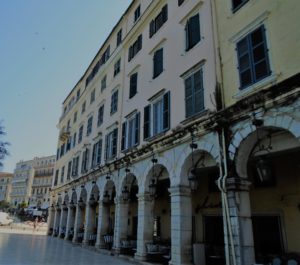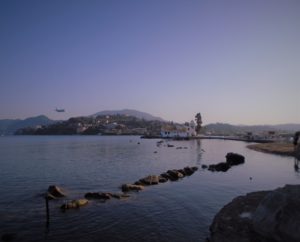Corfu is the birthplace of great poets, writers and people of art and culture. Its historical background is linked to the acceptance of the principles of French and English town planning and Italian architecture in historic buildings. The appearance of capitalism in the regions were associated with the development of a new urban environment. First to be reformed were the traditional city ports and transport centers as well as the capitals of the newly formed countries.

Architectural significance
The island is a rare mixture of elitist reminiscence of the majestic past, the emotional tranquility, and the sea peace. The aesthetics of the historic buildings stands out with the walking of residents, tourists, and visitors. They are good – preserved, influenced by the wave of modernism. The characteristics of the buildings emphasize detail with significant architectural attractiveness. They look like a tasteful joke of aging wine, quality increases as more time passes.
For example, Mon Repos is the old palace, which are in a key position, just a few kilometers from the historical center of Corfu and the airport. From Mon Repos the panoramic view is breathtaking. Dominates the Ionian Sea with the turquoise waters and the cool breeze, the mind and soul travel you. In the palace there are sculptures, paintings, with the main exponent being the ancient “Greek” Achilles, who had his kingdom on the island of Phaeacians, according to Homer.

Environmental significance and representations in media
In addition, the environmental importance of the island makes the visit particularly attractive. Ecosystems are created in vegetation. The flora and fauna of the island know a healthy environmental cycle. But in many cases, for example in the waste management system, great efforts are being made with neighboring regions to make it more effective and appropriate. In the urban context, new forms of coordination are emerging, still constituting a disparate, evolving and little-known set of operating rules. Marked by decentralized “bottom-up” and adaptive “flexible rules.”
Also, the beaches of the island are famous from international movies and Greek songs, as in the neighboring settlements there are restaurants and taverns with tasty fish and a variety of dishes. Environmental sensitivity and conscientiousness in the context of climate change is particularly important from the point of view of tourists and residents. Around the environment, a diversity of activities is developed with plants, trees, fruits, fish and vegetables, which contribute to a range of economic, social and cultural activities.
Opportunities for change
In summary, the island has a strong developmental physiognomy. The triptych Architecture – Environment – History fits the philosophy of the region. The “Sustainable City” has become synonymous to the “Dense and Cohesive city”, as the latter is viewed as economically, socially, culturally and environmentally viable. Consequently, it emerges as a model of an “integrated, holistic approach.” The development of a vision for the improvement of accessibility, the increase of tourist flows, while protecting and highlighting the main points of the island’s identity is a great opportunity for the tourist, environmental, urban, artistic and cultural dimension of the island.

Efthymios Spyridon Georgiou (LinkedIn) is an experienced Journalist and Urban Planner with a demonstrated history of working in the architecture & planning industry.
Are you currently involved with regional research, policy, and development? The Regional Studies Association is accepting articles for their online blog. For more information, contact the Blog Editor at rsablog@regionalstudies.org.